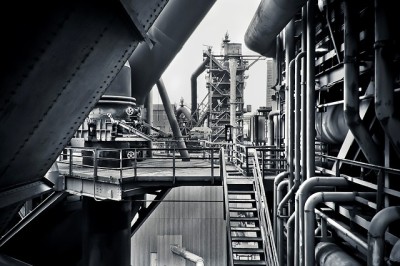5 Tips to Choosing Pipes For Industrial Markets

Plastic pipework systems are now widely utilized because of the wide range of benefits associated with the material. These include the fact that they are cost efficient, lightweight, chemical resistant, immune to corrosion and rust, and easy to install and customize.
Nonetheless, what a lot of people do not realize is the fact that there is a huge selection of different types of plastic pipework systems to choose between today.
This article will provide you with the necessary information needed in order to determine what type of plastic pipe is going to be the best for your system.
#1 What Kind of Pipes are Available
First and foremost it is important to have a better idea regarding the scope of different plastic pipes available. One of the most popular options is a pipe that has been made from polyvinyl chloride – more commonly known as PVC.
In addition to this, CPVC (chlorinated polyvinyl chloride) is also another widely utilized option. Plus, you have a lot of plastic pipes that have been designed with the primary function of dealing with the transportation of chemicals.
These are made from materials such as PB (polybutylene) and PE (polyethylene). You can also get water flow meters and other accessories to fit with the pipes, so this should be considered too.
You will want to make sure that you can get everything you need for your pipe system and that everything is compatible.
#2 Decide on a System
The first thing you need to think about when deciding on a plastic pipework system is to consider your business reasons for needing it. After all, there are lots of different types of industrial systems.
If you are using the system for drainage, removing waste, or venting, then you are better off using PVC. This is recommended for all non-pressure applications. If you wish to transport water then you would be best off using CPVC plastic.
And then as previously mentioned, PB and PE plastic are best for potentially harmful utilization. This includes any materials that are of a corrosive or gaseous nature. Nonetheless, these should not be utilized when it comes to carrying heating oil, kerosene or other fuel products.
#3 What is Your Temperature Level
Once you have thought about this you then need to think about the temperature. This is important because all materials are transported at different temperature levels.
If you are going to be dealing with materials that are less than 180 degrees in Fahrenheit then CPVC pipe is widely considered the most suitable. Nevertheless, if this is ranged between 120 and 150 degrees Fahrenheit then you can utilize PVC.
As you can imagine harmful chemicals are over a higher temperature, and thus anything between 200 and 210 degrees Fahrenheit should require a system made from PE or PB.
#4 Volume and Material
In addition to this, you need to consider the volume of material going through the pipes and how frequently the pipework system is going to be utilized.
This is important because it determines the thickness of the pipe you need. This is often talked about in terms of ‘schedule’. The walls of the plastic will be thinner if the schedule is lower.
In general, you can select between anything as low as 40 schedules and anything as high as schedule 120. As you may imagine; thinner walls are better suited for light materials.
#5 Cost
There are, of course, general factors that need to be considered as well, for example, how much the pipes are going to cost, the feedback that has been left online, and the brand. After all, not all pipes are created equally, and so you will need to choose a company with care to ensure that they are of high quality.
Thankfully, the Internet has made it much easier for businesses to make wise purchase decisions. You can easily compare different options against one and other, as well as researching the brand and the company you are thinking about buying from. Plus, independent review platforms provide a great way to get true opinion about the industrial pipes you are interested in.
If you consider all the points that have been touched upon in this article then you should have no trouble coming up with the best pipework system for your industrial application specifically.






![[INFOGRAPHIC] The Advantages Of Digital Currency And Why The World Is Moving Away From Paper](https://stumbleforward.com/wp-content/uploads/2016/09/coins-currency-investment-insurance.jpg)